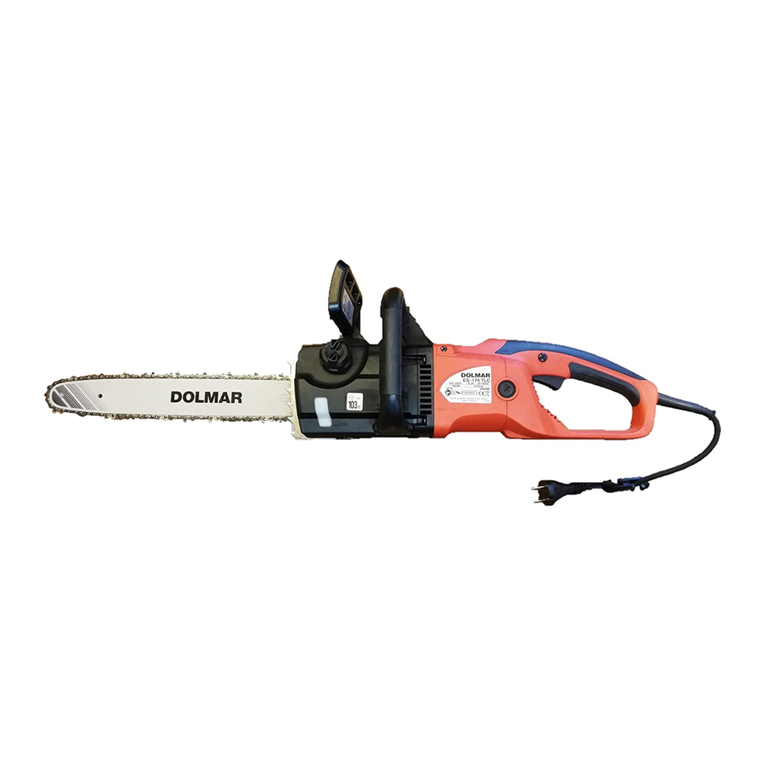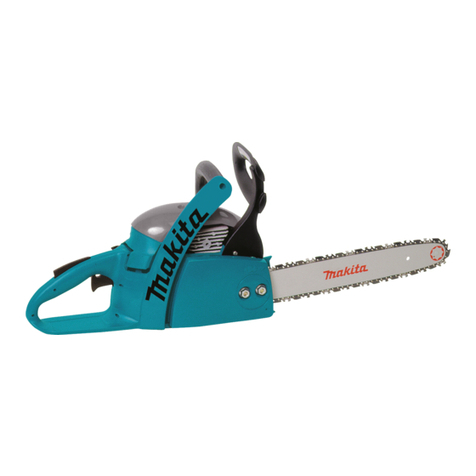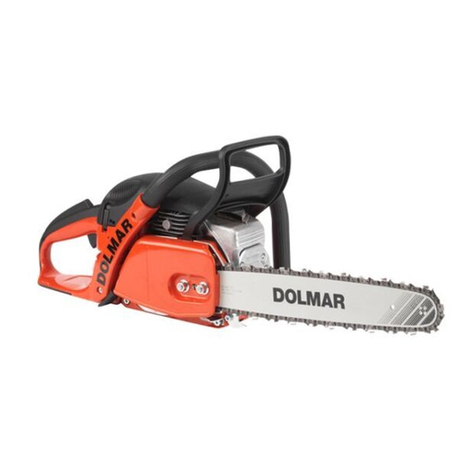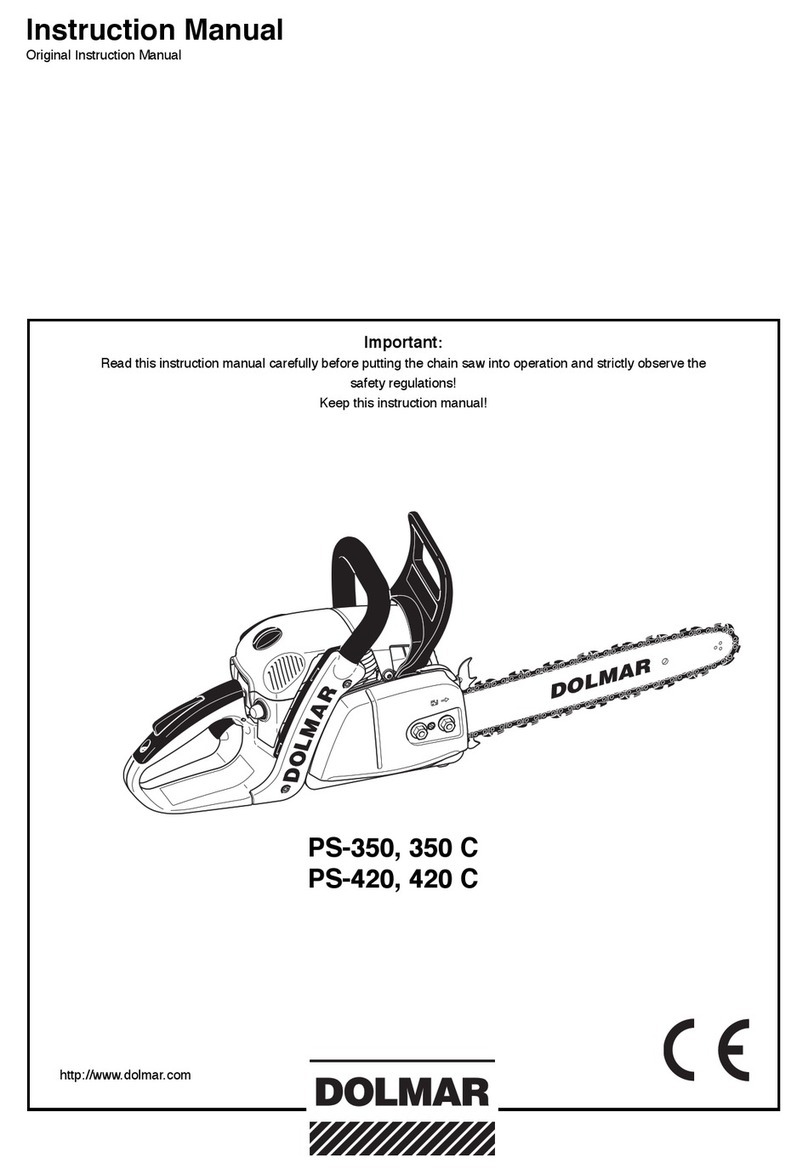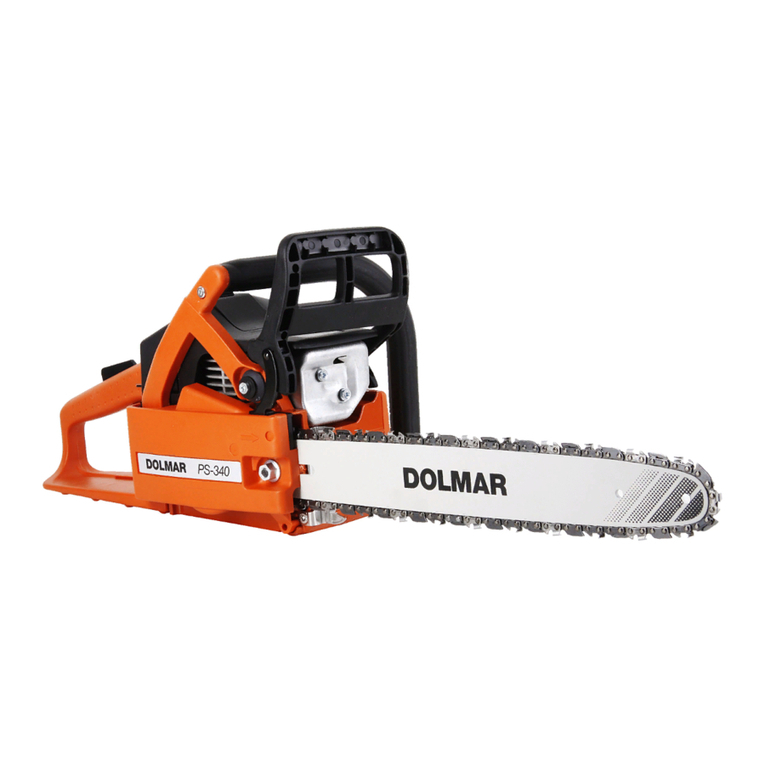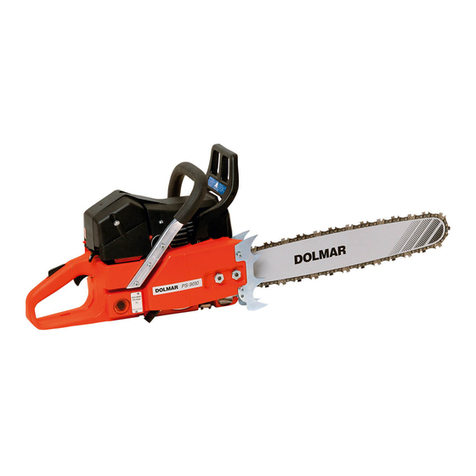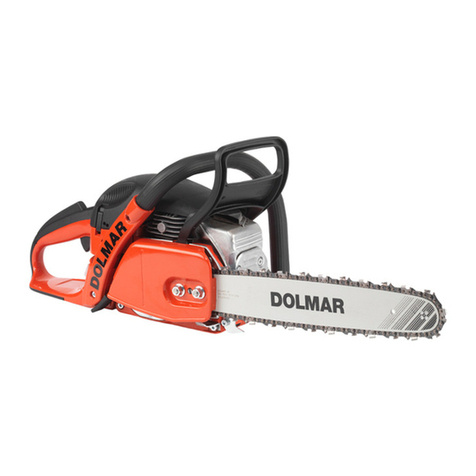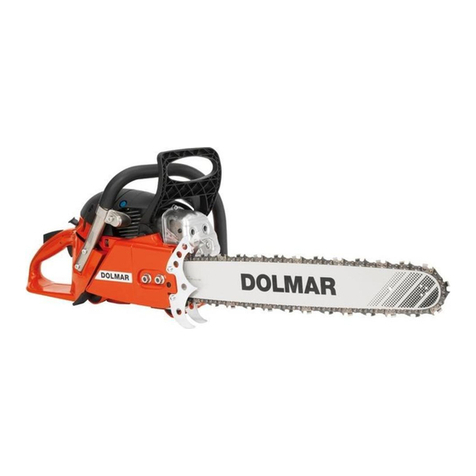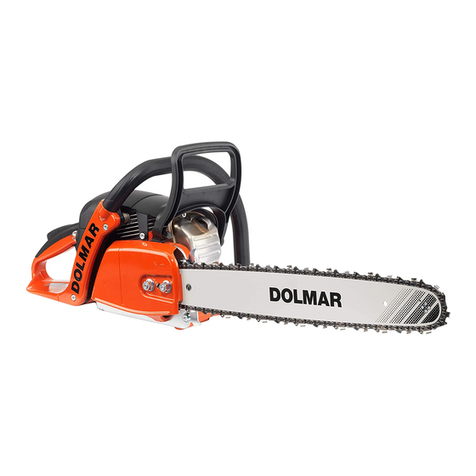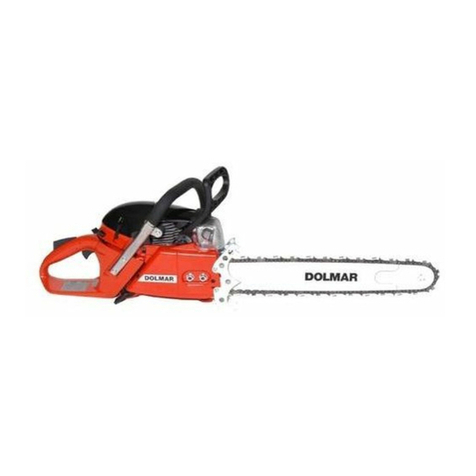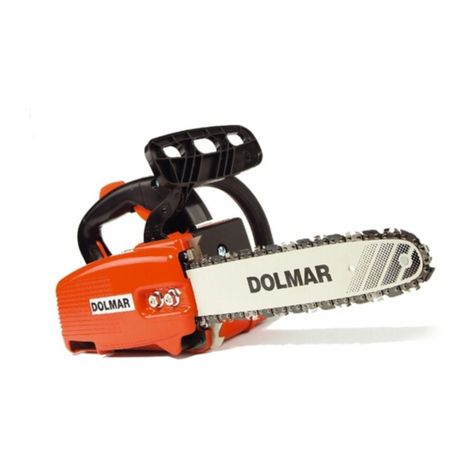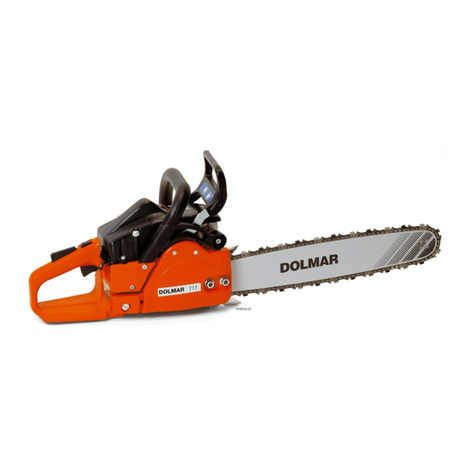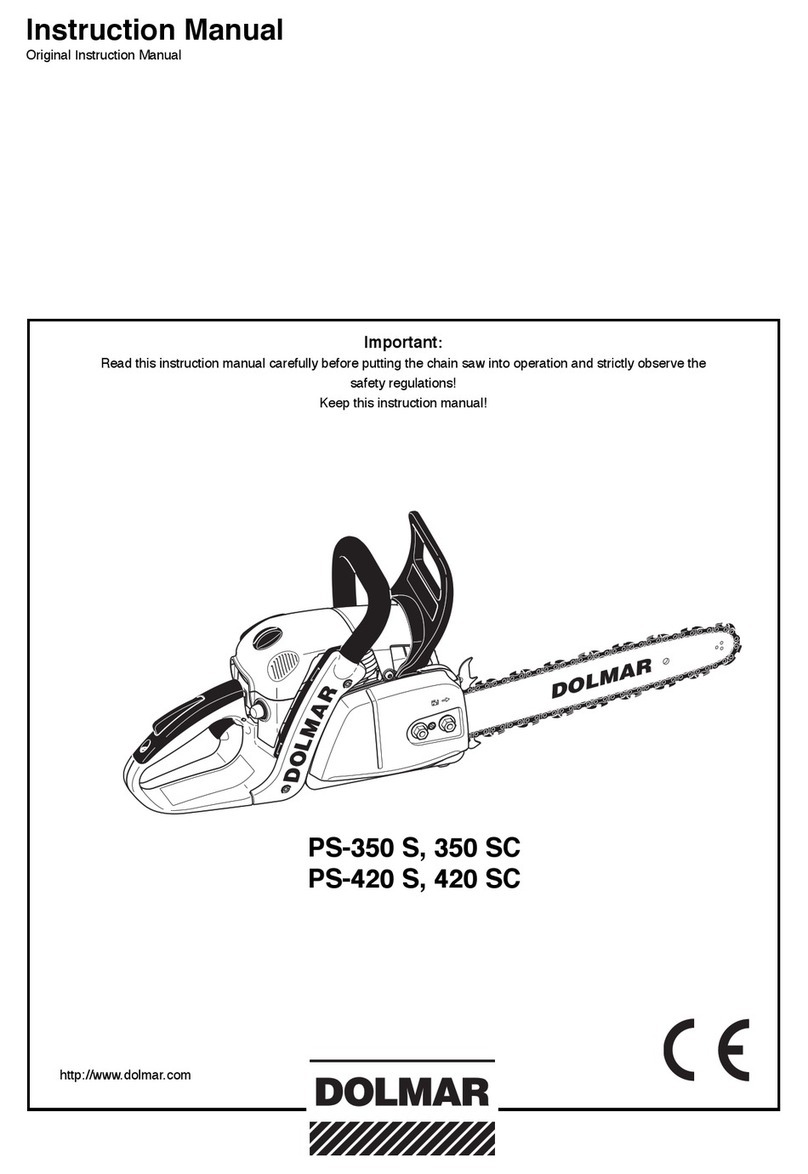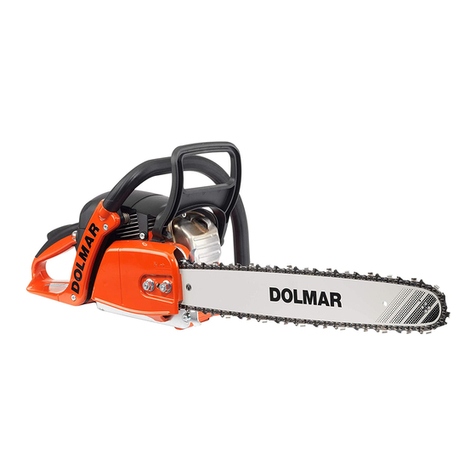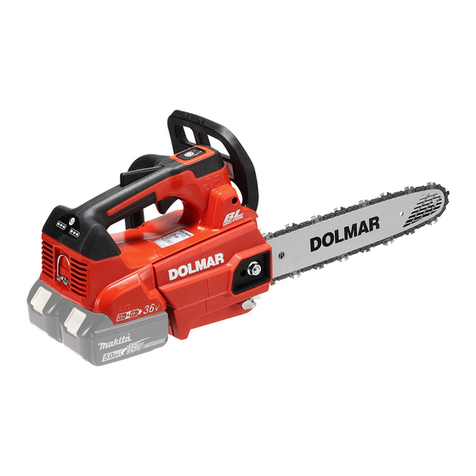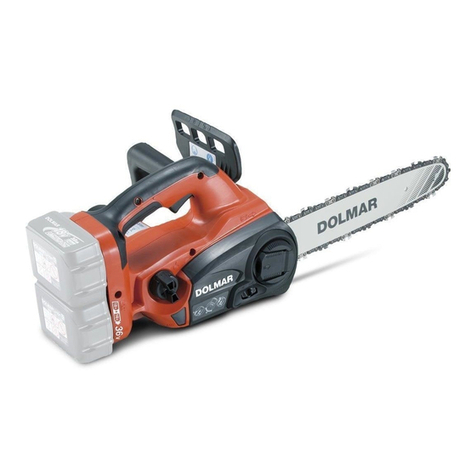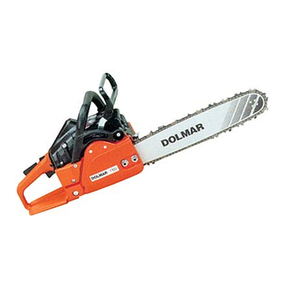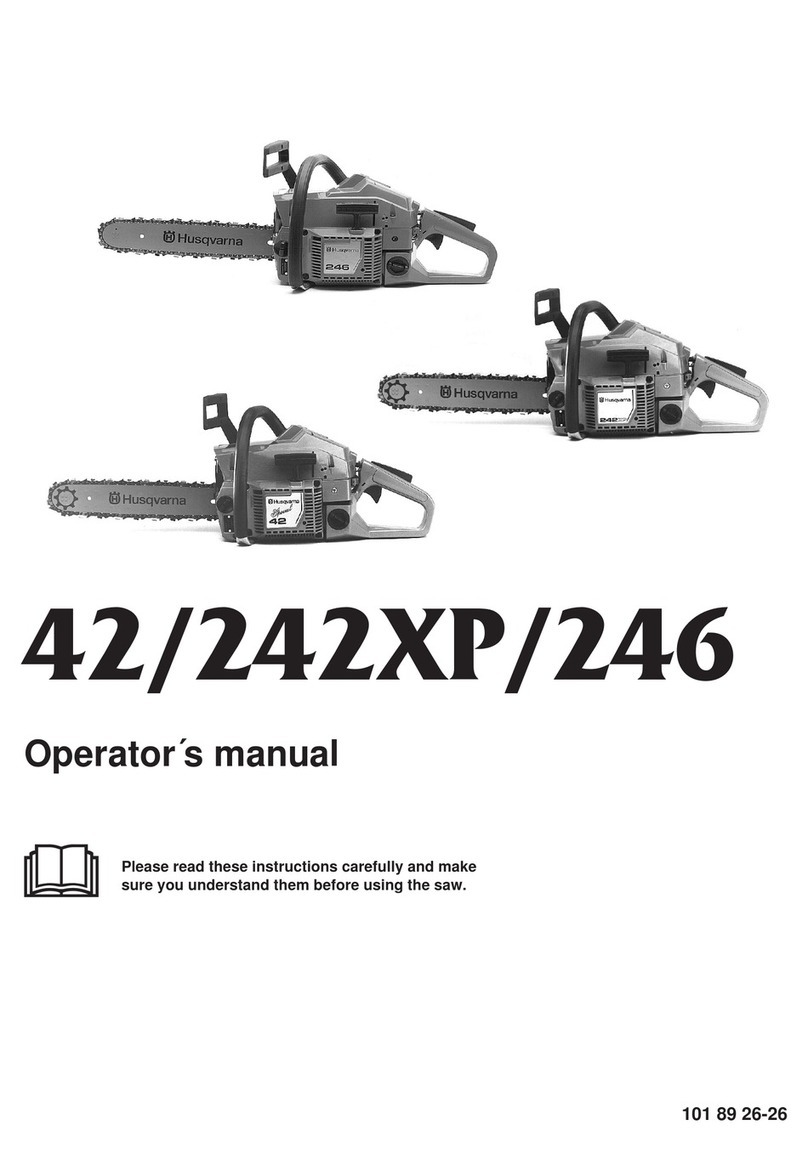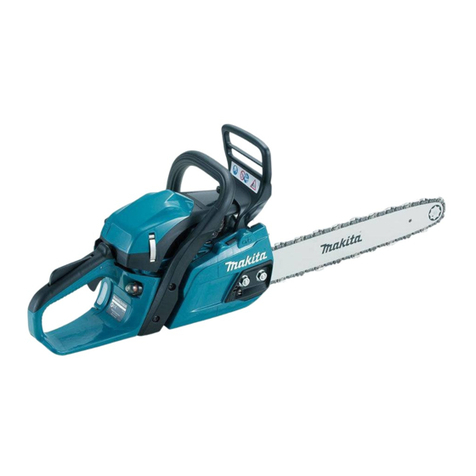
9ENGLISH
Intended use
This chain saw is intended for sawing wood.
Noise
The typicalA-weighted noise level determined accord-
ingtoEN60745:
Sound pressure level (LpA):87.7dB(A)
Sound power level (LWA):100.4dB(A)
Uncertainty(K):2dB(A)
WARNING: Wear ear protection.
Vibration
The vibration total value (tri-axial vector sum) deter-
minedaccordingtoEN60745:
Workmode:cuttingwood
Vibration emission (ah,W):5.3m/s2
Uncertainty(K):1.5m/s2
NOTE: The declared vibration emission value has
been measured in accordance with the standard test
method and may be used for comparing one tool with
another.
NOTE:
The declared vibration emission value may
also be used in a preliminary assessment of exposure.
WARNING: The vibration emission during actual
use of the power tool can differ from the declared
emission value depending on the ways in which the
tool is used.
WARNING: Be sure to identify safety measures
to protect the operator that are based on an estima-
tion of exposure in the actual conditions of use (taking
account of all parts of the operating cycle such as
the times when the tool is switched off and when it is
running idle in addition to the trigger time).
EC Declaration of Conformity
For European countries only
TheECdeclarationofconformityisincludedasAnnexA
to this instruction manual.
SAFETY WARNINGS
General power tool safety warnings
WARNING: Read all safety warnings, instruc-
tions, illustrations and specications provided
with this power tool. Failure to follow all instructions
listedbelowmayresultinelectricshock,reand/or
seriousinjury.
Save all warnings and instruc-
tions for future reference.
The term "power tool" in the warnings refers to your
mains-operated (corded) power tool or battery-operated
(cordless) power tool.
Cordless Chain saw safety warnings
1.
Keep all parts of the body away from the saw
chain when the chain saw is operating. Before
you start the chain saw, make sure the saw chain
is not contacting anything.Amoment of inatten-
tion while operating chain saws may cause entan-
glement of your clothing or body with the saw chain.
2. Always hold the chain saw with your right
hand on the rear handle and your left hand on
the front handle. Holding the chain saw with a
reversedhandcongurationincreasestheriskof
personalinjuryandshouldneverbedone.
3.
Hold the power tool by insulated gripping sur-
faces only, because the saw chain may contact
hidden wiring. Saw chains contacting a "live" wire
may make exposed metal parts of the power tool
"live" and could give the operator an electric shock.
4. Wear safety glasses and hearing protection.
Further protective equipment for head, hands,
legs and feet is recommended.Adequate protec-
tiveclothingwillreducepersonalinjurybyying
debris or accidental contact with the saw chain.
5.
Do not operate a chain saw in a tree. Operation of a
chainsawwhileupinatreemayresultinpersonalinjury.
6.
Always keep proper footing and operate the chain
saw only when standing on xed, secure and level
surface. Slippery or unstable surfaces such as ladders
may cause a loss of balance or control of the chain saw.
7.
When cutting a limb that is under tension be alert
for spring back.Whenthetensioninthewoodbres
is released the spring loaded limb may strike the
operator and/or throw the chain saw out of control.
8.
Use extreme caution when cutting brush and sap-
lings. The slender material may catch the saw chain
and be whipped toward you or pull you off balance.
9.
Carry the chain saw by the front handle with the chain
saw switched off and away from your body. When trans-
porting or storing the chain saw always t the guide
bar cover. Proper handling of the chain saw will reduce the
likelihood of accidental contact with the moving saw chain.
10. Follow instructions for lubricating, chain ten-
sioning and changing accessories. Improperly
tensioned or lubricated chain may either break or
increase the chance for kickback.
11.
Keep handles dry, clean, and free from oil and grease.
Greasy, oily handles are slippery causing loss of control.
12.
Cut wood only. Do not use chain saw for purposes
not intended.Forexample:donotusechainsawfor
cutting plastic, masonry or non-wood building materi-
als. Use of the chain saw for operations different than
intended could result in a hazardous situation.
13. Causes and operator prevention of kickback:
Kickback may occur when the nose or tip of the guide
bartouchesanobject,orwhenthewoodclosesinand
pinches the saw chain in the cut. Tip contact in some
cases may cause a sudden reverse reaction, kicking the
guide bar up and back towards the operator. Pinching
the saw chain along the top of the guide bar may push
theguidebarrapidlybacktowardstheoperator.Either
of these reactions may cause you to lose control of the
sawwhichcouldresultinseriouspersonalinjury.Donot
rely exclusively upon the safety devices built into your
saw. As a chain saw user, you should take several steps
tokeepyourcuttingjobsfreefromaccidentorinjury.
